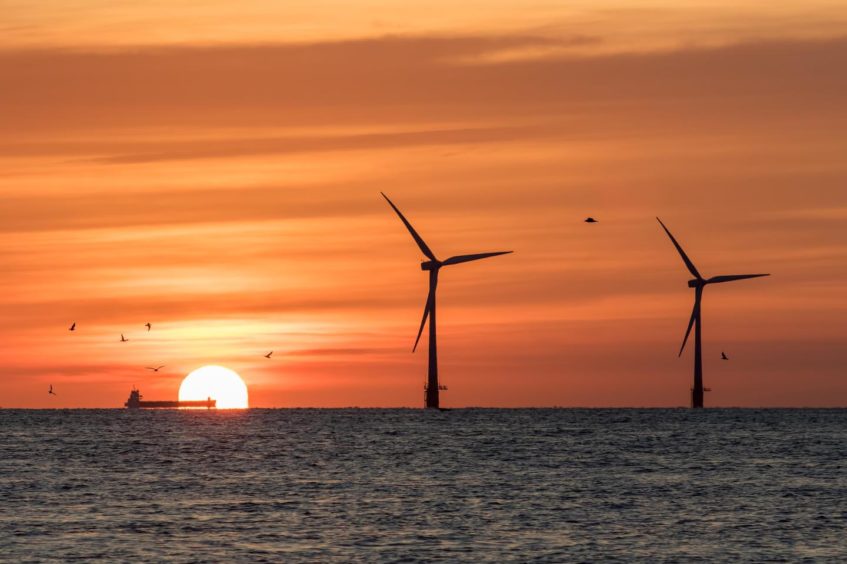
The nascent offshore wind market in the Philippines, which is Southeast Asia’s second most populous country, offers exciting opportunities for foreign investors, particularly experienced UK companies.
“At this stage there is a lot of scope for Scottish technical consultants to support all aspects of marine spatial planning, geophysical surveys, resource, and supply chain readiness assessment. And once the Department of Energy publishes its formal offshore wind policy, then we should start to see Scottish developers, EPC contractors, and other supply chain companies taking a firmer interest in the market,” Kevin Liu, head of energy, Asia Pacific, at Scottish Development International (SDI), told Energy Voice.
“Floating technology is certainly an area where we can claim a competitive advantage, but I would imagine that the Philippines will still begin with bottom fixed projects first since floating is likely to remain too expensive for this market in the next two to three years,” added Liu.
The Philippines, which is power hungry, holds massive offshore wind potential. According to a study by the World Bank there is 178 GW of technical offshore wind potential – of this 160 GW is based on floating wind. Currently, the country has no offshore wind. But the Philippines’ Department of Energy (DOE) aims to collaborate with the World Bank, Carbon Trust, as well as the Global Wind Energy Council (GWEC), to unlock the country’s vast offshore wind potential.
In June, the DOE with support from the World Bank Group, launched the Philippine Offshore Wind Roadmap project. Funded by the World Bank, the project aims to identify areas in the Philippines with high potential for offshore wind development.
The roadmap will also establish short and long-term offshore wind targets, formulate strategies to successfully integrate offshore wind in the government’s renewable energy portfolio, and put forth recommendations on policies that are necessary to foster a conducive business environment for offshore wind investors. The World Bank Group hired BVG Associates to explore the technical, economic, environmental, social, employment, and financing aspects of establishing an offshore wind market in the Philippines.
Following the June announcement, John Yeap, Hong Kong-based infrastructure expert at law firm Pinsent Masons, said “with Taiwan to the north and Vietnam to the west, the Philippines, particularly the northern islands, should be well placed to join its neighbours in seeking to exploit the potential for offshore wind.”
“Unlike its neighbours though, the Philippines has a fully deregulated electricity market, which suggests that the commercialising of large offshore wind projects will be dependent on robust government policies, not just on ensuring the technical and economic viability of the sector, but also ensuring the required transparent responses in the electricity market. The study that has been announced would hopefully set out a clear roadmap for the development of this sector and in turn deliver the platform for investor confidence in the sector,” added Yeap.
For now, there are very few policy support measures targeting offshore wind. But the government has granted permission for site measurements and is teaming up with the international agencies to develop a regulatory framework, Robert Liew, an Asia-focused analyst at Wood Mackenzie, told Energy Voice.
Liew also cautioned that one of the biggest challenges facing the market in the Philippines is how to manage costs, as offshore wind is currently one of the most expensive sources of energy. “Under the current administration of president Duterte, the focus is still very much on energy affordability,” added Liew.
Still, SDI’s Liu is upbeat. “I think there is genuine political commitment to decarbonise in the Philippines and that’s often the most important ingredient”.
While the Philippines is still in the early stages of its offshore wind journey, the DOE has already awarded development rights to initial projects in the northern and central areas of the country. These “projects are being driven by foreign companies who are keen to leverage their experience to capitalise on the Philippines’ rich offshore wind resources,” said Wood Mackenzie’s Liew.
The awarded projects include Guimaras Strait Wind Power Project, Aparri Bay Wind Power Project, Guimaras Strait II Wind Project, Frontera Bay WPP, and San Miguel Bay WPP, with the combined potential capacity of 5 GW.
Significantly, the Philippines is ranked as the second-best investment destination for renewable energy in Southeast Asia, behind Vietnam, according to research by HSBC.
This bodes well for the country, which last year put a moratorium on new coal-fired power development and is now seeking to expand its renewable energy capacity.
Nevertheless, Liew does not expect any offshore wind capacity before 2030 in the Southeast Asia nation.
Indeed, the Philippines faces several challenges, including typhoon conditions and grid constraints – there is no national network across the archipelago. Upgrades to the grid will be slow and private developers will need to factor in grid connection costs for their projects.
Policy and permitting remains in the early stages and are uncertain. There are also environmental challenges, aside from the regular typhoon season, there is a lot of marine biodiversity to consider.
Supply chain challenges exist too. Ports for fabrication and assembly do not really exist yet. It is expected to take seven to ten years to build out the necessary logistical infrastructure required to support the offshore wind sector. There is also a shortage of qualified labour as there is limited local offshore experience. Developers or equipment manufacturers will need to bring this capability.
Despite the challenges many developers are already involved and there is a lot of interest in marine studies to identify the hot sites. This is a frontier market worth keeping an eye on.
Recommended for you

